
views
Assessing the Situation
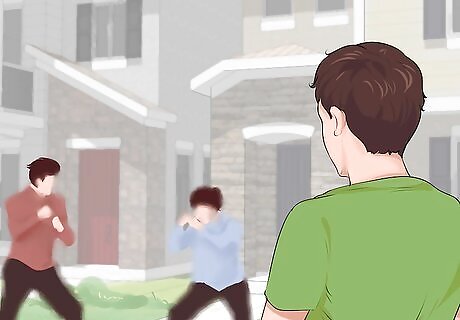
Keep your distance. There is no need to get involved in a fight if you don't have to. By keeping your distance, this can help to preserve your personal safety. If you're unsure about what to do when faced with a fight, take a step back or find a safe area. This can be the best course of action. Place your own safety first. Use non-violent means, before resorting to physical methods for breaking up a fight. Physical methods for breaking up a fight are a last resort, and are for use when other options are exhausted or non-existent.

Look for underlying causes. Conflicts can be about hidden or unconscious beliefs and values. Being able to determine the true cause for a fight can help you to resolve it. Try to think about the personality and cultural aspects at play, before you step in. Understand the relationship between the two people in a fight. Do these people know each other? Are they family members? Is this about a romantic interest? Examine possible motivations. Is this random aggression, or is it driven by a specific feeling of being wronged? The differences in motivations can alter how two people in a fight will respond to someone breaking it up. Random, unprovoked aggression is less likely to be responsive to attempts at mediation, as the aggressor may not have a strong grasp on why they're being aggressive. Ask questions to anyone who will answer.
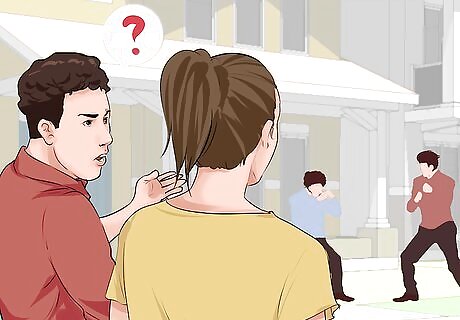
Determine the facts. Fights can start as the result of a misunderstanding. By determining the truth about what is going on, you can give yourself the upper hand when it comes to calming parties involved. Make sure you have the truth about the situation before charging in. It is better not to involve yourself than to make things worse. Note who, what, where, when, and why. This can help you take in the whole situation, as well as provide useful if the police become involved. Talk to witnesses. Ask questions to people involved.

Take stock of yourself. You need to make sure you are prepared to handle such a conflict. Take stock of the state you are in. If you are intoxicated, over-tired, or not dressed for such activity, think twice before attempting to break up the fight.
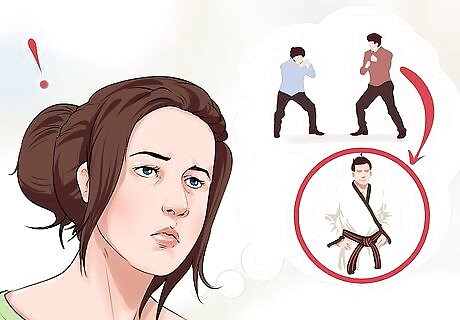
Evaluate the people involved. Figure out the position each party involved is in. If they are intoxicated, armed, or clearly a more than capable fighter, it might not be a good situation to get involved in. Understand the people escalating the altercation, before you decide to interfere.
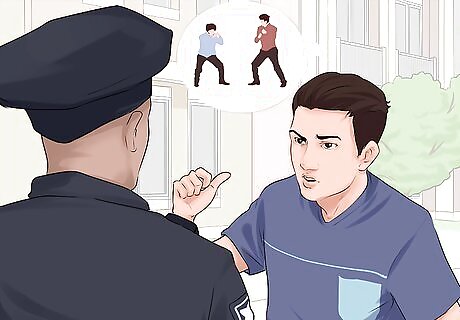
Find an authority. Get a teacher, a security guard, or a police officer. In order to prevent yourself from being in harm's way, get someone trained to grapple with this kind of situation. Immediately find someone in a position of authority to manage the violent engagement.
Applying Non-violent Methods

Create a distraction. When things between two people get heated, sometimes it is possible to calm them down with a distraction. Mention or ask about their family members or the friends they came with. It can make them think about someone they think fondly of, calming them down. There are many quick ways to break the tension. Give commands in a calm, authoritative voice. Many fights among children can be broken up this way. Use humor. Sing a song, loudly. Do not yell.
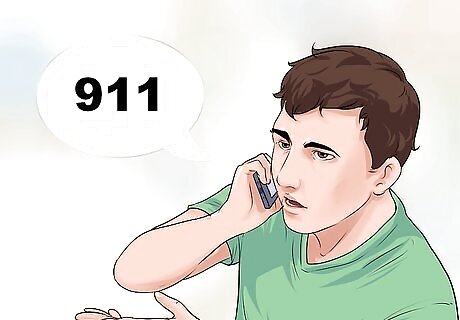
Make a show of calling the police. If you loudly proclaim you are calling the police, and then make the phone call, this can quickly break up the fight. No one will want to be around when the police come. This is a quick solution. Be prepared: Charges may be filed against the people involved, and you may need to stay around to speak with the officers.
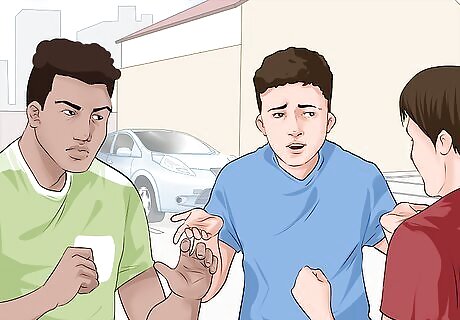
Empathize. This means putting yourself in the other person's position. Empathy taps into the emotional nature of aggression, in order to reason with individuals who may not be in a state of mind to accept logical reasoning. By giving yourself the opportunity to understand how the combatants feel, as well as helping them to understand how their enemy feels, you might find greater insight into how to dissolve the conflict. Invoking empathy can help mitigate aggression. Ask people in the fight to see it from an other's point of view. Use language that shows you understand how they people in the fight feel. Use clear, emotional language to elicit empathy.
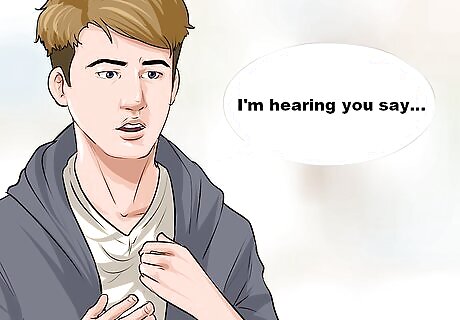
Converse. Often, talking in a calm voice with aggressors can help them to feel calm. Dialogue can give people the ability to vent some of the emotions bringing on the aggression, making it crucial to conflict resolution. It can also help reveal the source of the problem. Use “I” statements. I feel... I'm hearing you say... Avoid “you” statements that might feel like accusations. Ask questions. Be calm.
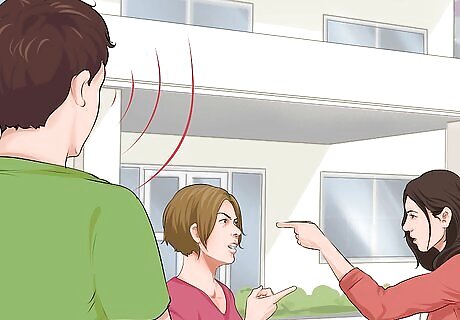
Listen. Aggression can come from frustration, and sometimes these frustrations just need a kind ear. Give the parties involved each a chance to talk, and help them feel that someone is actually listening to how they feel. Sometimes, people feel better when they get their feelings off their chest. Use verbal signs you're listening, such as saying, “I see your point.” Nod. Make eye contact.

Mediate. Encourage both parties to see if there is a compromise. Work with them to help make sure no one is getting a bad deal. Do not impose a solution on the parties involved. Remember to be impartial, as this will help both parties feel comfortable. Actively listen. Ask questions. Gradually help the two parties to negotiate the dispute on their own.
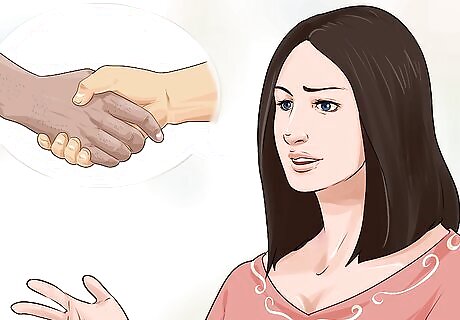
Facilitate reconciliation. Try to get the parties to recognize what they did to hurt the other, and to forgive each other. This can help ensure future fights don't occur, and it can also assist in calming a situation down. By helping people to reconcile, we enable them to forgive and put the past behind them.
Using Physical Means
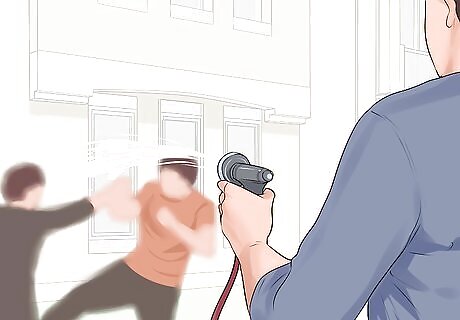
Throw cold water. Sometimes a blast of cold water can cool down a temper. Toss a cup or pot of water on the people fighting, or get the hose. This is a good way to avoid placing yourself directly in contact with the aggressors.
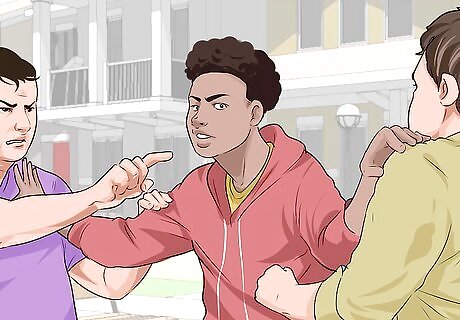
Place yourself between combatants. By placing yourself between two people who are fighting, you can interrupt their fight. It is important to recognize this might result in injury to you. Especially if you feel neither person involved will harm you, this can be a successful solution.

Restrain an aggressor. Be cautious when restraining anyone. Many kinds of restraining holds can result in bodily harm. Not only can attempting to restrain a violent person result in harm to you, restraining people can seriously harm the person you're holding on to. While combat holds and other manners of restraint can be effective with an adult, they can cause injury or even death, and are only recommended in extreme situations. It is not suitable to restrain children with combat holds, such as a chokehold. A firm hug is considered, in some states, an acceptable way to break up fights between children when proper training is lacking. Hugs can also be used for fights among adults. Choke/strangleholds Arm/leglocks Pinning holds
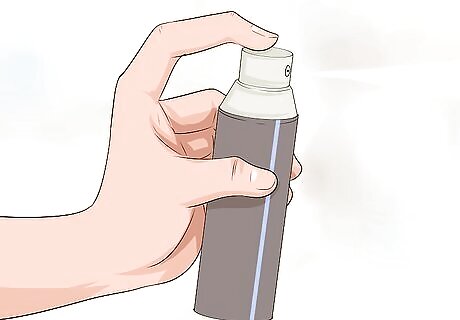
Use pepper spray. It is quite common for police to use pepper spray to break up a fight, but if you're a civilian, consider pepper spray in only the most extreme cases. Pepper spray can not only disable the aggressors, it will also keep the fight from starting back up. Be cautious with pepper spray, as some people are allergic to it, and it can cause severe health problems. Extra caution should be taken with pepper spray, as it can be illegal to carry, and spraying someone in the face can be a crime.



















Comments
0 comment